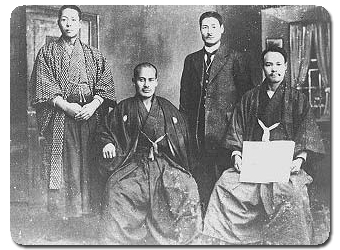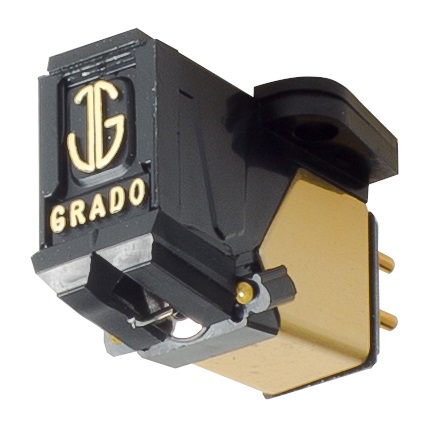 Quando ero tutto Linux e OpenOffice e lavoravo all’università tra fior di ricercatori e menti aperte, ho provato ad applicare alla realtà il fare a meno dello strapotere di Microsoft. Niente Windows, niente Office! Linux e OpenOffice funzionavano a meraviglia. Esportavo in formato Microsoft se necessario. Outlook? No, Thunderbird era fantastico. E chi ha bisogno di Internet Explorer quando Firefox è sempre stato nettamente superiore?
Quando ero tutto Linux e OpenOffice e lavoravo all’università tra fior di ricercatori e menti aperte, ho provato ad applicare alla realtà il fare a meno dello strapotere di Microsoft. Niente Windows, niente Office! Linux e OpenOffice funzionavano a meraviglia. Esportavo in formato Microsoft se necessario. Outlook? No, Thunderbird era fantastico. E chi ha bisogno di Internet Explorer quando Firefox è sempre stato nettamente superiore?
Buon Natalis Solis e Kado Matsu a tutti!
 E’ noto come il Natale cristiano sia stato “posizionato” dalla Chiesa appena dopo il solstizio di dicembre, nella accorta opera di sovrapporre ad ogni festa pagana una festa cristiana, così come aveva fatto con le chiese costruite sui templi romani. La festa pagana del solstizio d’inverno (21 dicembre) era festeggiata sin da tempi immemori. Il sole raggiunge il suo punto più basso dell’anno a mezzogiorno sull’orizzonte il 21 dicembre (considerato astronomicamente l’inizio dell’inverno) e sembra fermarsi lì per pochi giorni (solstizio : il sole che “staziona”), poi “riparte” – ed è proprio questa la chiave di lettura. Si ricomincia, nuova vita, si va verso un tempo migliore. In occidente come in oriente, si festeggia l’inizio della fine della notte artica, un periodo duro e buio (il giorno più corto, dopo il quale le giornate si riallungano), salutando l’inizio di uno migliore, più luminoso e ricco di speranza.
E’ noto come il Natale cristiano sia stato “posizionato” dalla Chiesa appena dopo il solstizio di dicembre, nella accorta opera di sovrapporre ad ogni festa pagana una festa cristiana, così come aveva fatto con le chiese costruite sui templi romani. La festa pagana del solstizio d’inverno (21 dicembre) era festeggiata sin da tempi immemori. Il sole raggiunge il suo punto più basso dell’anno a mezzogiorno sull’orizzonte il 21 dicembre (considerato astronomicamente l’inizio dell’inverno) e sembra fermarsi lì per pochi giorni (solstizio : il sole che “staziona”), poi “riparte” – ed è proprio questa la chiave di lettura. Si ricomincia, nuova vita, si va verso un tempo migliore. In occidente come in oriente, si festeggia l’inizio della fine della notte artica, un periodo duro e buio (il giorno più corto, dopo il quale le giornate si riallungano), salutando l’inizio di uno migliore, più luminoso e ricco di speranza.
Vanity Budo

Japanese martial arts – properly speaking (I mean Budo, not Bujutsu) have been created as a means to self-improvement. The aikido founder clearly talked about a practice to shape honest and truthful people. Judo and karate, just to name the most famous, are no less. Probably, their involvement in combats and competitions, the prizes and the achievements affected the practitioners’ ego, which has been inflated instead of diminished. But aikido has no competitions, so the problem must be found elsewhere, since aikido is not certainly a discipline which is immune to attention-seeking behavior. Yet, one of the practice’s goals is exactly that: limit your ego.
The “Grado Labs” and the heart choices in HiFi
 How convenient is following your feelings, making heart choices when looking for a HiFi component? I admit it may be rather dangerous. High Fidelity is a quite expensive hobby, even a lot sometimes. Before spending those amounts of money we earned by hard work, we should be very cautious. We should use our rationality and choose what better suits our needs. Always? Not really, especially when quality is not in doubt.
How convenient is following your feelings, making heart choices when looking for a HiFi component? I admit it may be rather dangerous. High Fidelity is a quite expensive hobby, even a lot sometimes. Before spending those amounts of money we earned by hard work, we should be very cautious. We should use our rationality and choose what better suits our needs. Always? Not really, especially when quality is not in doubt.
Dieci anni, sono passati dieci anni…
 Il grosso pick up blu della Ford brontolava, fermo nella fila di luci rosse lungo la U.S. 1, transennata e ridotta ad una corsia. Che c’erano i lavori me l’avevano detto, lo sapevo, ma già ero partito in ritardo dall’ufficio e non me la sentivo di tentare una strada alternativa visto che non ero pratico della zona. Il tempo previsto da Norwood, New Jersey, per raggiungere Jersey City, la sorella di New York oltre fiume, era di 45 minuti senza traffico ed io correvo sempre il rischio di sbagliami. In più era il 2 dicembre, un giovedì, ma qui come a Roma l’avvicinarsi del periodo natalizio si vede anche dal traffico. Era solo un mese che cercavo di districarmi tra le strade delle contee a cavallo del confine tra lo stato di New York e quello del New Jersey. E mi perdevo sempre, immancabilmente. C’era qualcosa nella segnaletica USA che mi confondeva. Forse erano i cartelli con il nome della strada che erano appesi, ben visibili, in corrispondenza dell’incrocio: designano la strada che si sta per incrociare, io invece ero portato, forse per abitudine europea, a pensare che fosse il nome della strada che stavo percorrendo – con conseguenze facilmente immaginabili…
Il grosso pick up blu della Ford brontolava, fermo nella fila di luci rosse lungo la U.S. 1, transennata e ridotta ad una corsia. Che c’erano i lavori me l’avevano detto, lo sapevo, ma già ero partito in ritardo dall’ufficio e non me la sentivo di tentare una strada alternativa visto che non ero pratico della zona. Il tempo previsto da Norwood, New Jersey, per raggiungere Jersey City, la sorella di New York oltre fiume, era di 45 minuti senza traffico ed io correvo sempre il rischio di sbagliami. In più era il 2 dicembre, un giovedì, ma qui come a Roma l’avvicinarsi del periodo natalizio si vede anche dal traffico. Era solo un mese che cercavo di districarmi tra le strade delle contee a cavallo del confine tra lo stato di New York e quello del New Jersey. E mi perdevo sempre, immancabilmente. C’era qualcosa nella segnaletica USA che mi confondeva. Forse erano i cartelli con il nome della strada che erano appesi, ben visibili, in corrispondenza dell’incrocio: designano la strada che si sta per incrociare, io invece ero portato, forse per abitudine europea, a pensare che fosse il nome della strada che stavo percorrendo – con conseguenze facilmente immaginabili…
Dilemmi analogici
 Il bello di un giradischi analogico è che è passibile di miglioramenti graduali che ne aumentano le prestazioni in modo tale che per avere qualcosa di paragonabile con un lettore CD bell’e pronto bisogna spendere cifre ben più alte. Ad esempio, il fonorivelatore, detto comunemente testina, è il maggior responsabile della qualità sonora di un giradischi. Il suo stilo, la puntina di lettura, è la parte sottoposta a pesante usura, il cui degrado inficia fortemente il suono (e danneggia pure il supporto). Leggendo una recensione di una puntina di ricambio sulla mia rivista audio di riferimento, mi era venuta un’idea per migliorare forse ancora un po’ le prestazioni del mio giradischi; ma si trattava anche di una possibile strategia per fare in modo che il cambio per usura della puntina non incidesse troppo sulla gestione economica del sistema.
Il bello di un giradischi analogico è che è passibile di miglioramenti graduali che ne aumentano le prestazioni in modo tale che per avere qualcosa di paragonabile con un lettore CD bell’e pronto bisogna spendere cifre ben più alte. Ad esempio, il fonorivelatore, detto comunemente testina, è il maggior responsabile della qualità sonora di un giradischi. Il suo stilo, la puntina di lettura, è la parte sottoposta a pesante usura, il cui degrado inficia fortemente il suono (e danneggia pure il supporto). Leggendo una recensione di una puntina di ricambio sulla mia rivista audio di riferimento, mi era venuta un’idea per migliorare forse ancora un po’ le prestazioni del mio giradischi; ma si trattava anche di una possibile strategia per fare in modo che il cambio per usura della puntina non incidesse troppo sulla gestione economica del sistema.